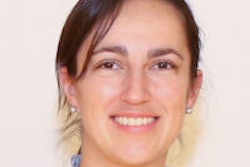
Catch 'em young: That's the message of a new survey on what determines whether a trainee will choose breast radiology as a career. Results show engaging with trainees from an early stage and extolling the positive job aspects can make a difference as to whether they become breast radiologists.
Dr. Simon Lowes from the radiology department at Queen Elizabeth Hospital in Gateshead, U.K., and colleagues surveyed all national specialty trainees in clinical radiology and found a significant factor influencing whether trainees decide to pursue advanced training in breast radiology is the timing and quality of their initial core training experience.
"The future of the specialty lies in the hands of current radiologists, and urgent action is required to ensure the sustainability of breast services and drive further improvements to patient care," the authors wrote (Clinical Radiology, 15 July 2017). "These results should be regarded as a challenge to all breast radiologists to engage with trainees from an early stage in their training and to enthuse them with the many positive aspects of a career in breast radiology."
Why trainees choose breast imaging
Breast imaging is not immune from the current shortages affecting radiology in the U.K. Although breast radiology is the largest area of special interest within general radiology, it faces the greatest workforce deficits, according to the study authors. They cited a 2015 survey that found 25% of National Health Service Breast Screening Programme units operate with just one or two consultant radiologists with no cover for sickness or absence. There were 60 vacant consultant breast radiologist posts, representing around 13% of all posts, with less than half expected to be filled within the following 12 months.
Also, in the next few years, 21% of breast radiologists are expected to retire, increasing to 38% by 2025 and 53% by 2030, which will have a detrimental effect on breast cancer screening and diagnosis unless these positions are filled.
"These problems are further compounded by the recognition that too few breast radiologists are being trained," Lowes and colleagues wrote.
So what makes a trainee decide to pursue a career in breast radiology -- or not? To find out, the researchers sent an online survey to all specialty trainees in clinical radiology via the Royal College of Radiologists Junior Radiologists' Forum regional representatives.
The 275 respondents represented 22% of U.K. radiology trainees from all regions. Of those, 35 trainees (12.9%) chose breast radiology as their choice of special interest. Of the remaining respondents, 123 trainees (45.2%) had chosen another area of special interest, and 114 (41.9%) had not yet made their decision.
The devil's in the detail
Standard clinical radiology training in the U.K. comprises three years of core radiology training followed by two years of advanced or special interest radiology training. During the first three years, all trainees are required to gain experience and basic competences across the core components of radiology, including breast radiology. During the last two years, trainees spend dedicated time in their chosen areas of special interest and develop higher competences in preparation for work as a consultant, according to the authors.
For the study, the survey respondents were asked in more detail about when and why they chose breast radiology: A little more than half (54.3%) made the decision to during their core breast radiology rotation, and 20% made their decision after their core breast radiology rotation. An additional 17.1% made the decision before their rotation but after starting radiology, and the remaining 8.6% knew they wanted to do breast radiology by the time they entered their first year of core radiology training.
The top three reasons respondents chose breast radiology were "interested in the subject," "good level of patient contact," and "positive experience during core rotation." Positive experiences during rotation included being made to feel welcome by staff in the department and having good support from the consultants.
Of the 123 respondents who chose a different area of special interest, 120 answered questions as to why. Most had no interest, but 10% answered that, although they chose another special interest in the end, breast radiology had been high on their list of options. The top three reasons why they decided against the specialty were "not interested in subject," "isolated from main radiology," and "find it boring."
For respondents undecided on their specialty, possible reasons for declining a career in breast imaging were "isolated from main radiology," "not interested in the subject," and "concerned about the potential for litigation."
Implications for breast radiology
For approximately 1 in 6 respondents, the trainee was not previously considering breast radiology, but the breast rotation changed his or her mind. Conversely, for 1 in 7 respondents, the trainee may have considered breast radiology, but the rotation deterred the person.
"This, therefore, should represent a window of opportunity for specialists to engage with trainees as much as possible to try and highlight the variety and complexity of modern breast radiology, ensuring broad exposure to all imaging modalities, hands-on experience of interventional techniques, as well as debunking myths such as the nature of the work being monotonous and repetitive," the authors wrote.
Lowes and colleagues also suggest organizing sessions with trainees as early as their first year to give an introduction to breast radiology and highlight its many positive factors. Also, "taster" sessions interspersed among other rotations could ignite interest.
"Encouragingly, once trainees have chosen breast radiology, they are overall happy with the decision, reflecting the importance of getting them on board at the earliest opportunity," they noted.


















